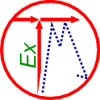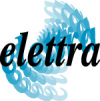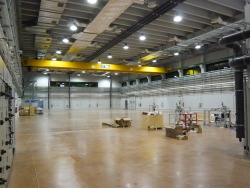Overview
With the advent of 4th generation free electron laser (FEL) light sources, which provide ultra-short pulses and high photon numbers per pulse not available before in the VUV to X-ray wavelength range, a wide variety of topics from condensed matter physics to plasma physics becomes now accessible for the first time.
The aim of the TIMEX project is the design and construction of an end-station to investigate metastable and/or excited states of matter under extreme conditions at the Italian FERMI@Elettra free electron laser facility.
The instrument, recently funded through a collaboration between the:
will exploit the unique intensity, energy domain and time structure of the FEL radiation delivered by the FERMI@Elettra source.
The energy and intensity of the Fermi@Elettra FEL beam is suitable for an efficient ultrafast heating of most bulk-like dense samples. We intend to exploit this unique source for two classes of experiments:
The TIMEX end-station has been developed through a collaboration between the University of Camerino ( XAS group ) and Sincrotrone Trieste and is in course of installation at the Elastic and Inelastic Scattering (EIS) beamline, under construction at the FERMI@Elettra FEL facility.
Scientific topics
A first topic concerns the creation and characterization of warm dense matter, a region of the density-pressure phase diagram between solids and plasmas where both the standard theories of condensed matter physics and/or plasma statistical physics are invalid. Such a regime is found in planetary interiors, cool dense stars, and in every plasma device where one starts from a solid, e.g., laser-solid-matter-produced plasma, as well as all inertial fusion schemes. The FEL VUV/soft x-rays pulses in the 10-100 eV range are able to raise solid matter at temperatures up to 10 eV in very short times compared to hydrodynamic expansion, in a way yet unachievable with other sources such as high-power infrared and visible light lasers. Experiments aimed at investigating physical properties of WDM such as optical/UV reflectivity, transmitted energy, etc will be performed using also ultrafast optical probes or the FEL harmonics.
A second important research objective of the project exploits the timescales involved in the FEL beam (0.1-1ps range) to access regions of metastable liquid regime presently unaccessible. The FEL beam will be used to isochorically heat amorphous systems (deposited from the vapor phase) into the metastable liquid state at a temperature where the nucleation rate is much higher than in any possible cooling experiment (no man's land). It will be therefore possible to follow the time evolution of this state, for example by optical-near UV reflectivity measurements. We expect to be able to detect the sample crystallization onset and measure nucleation rate and other properties of the metastable liquid before nucleation in a region presently unaccessible.
Status
The first FERMI lasing is expected by the end of 2010 and the experiments proposed within the TIMEX project will be "first-shot" activities (first runs on February 2011). The project is now in its starting phase, dedicated to assembling the end-station end setting-up pilot and free-electron-laser based experiments.





